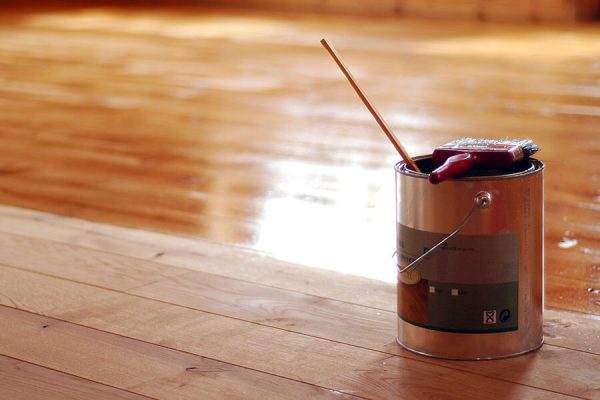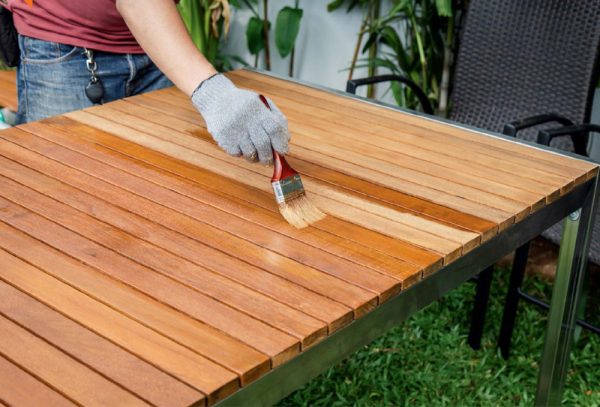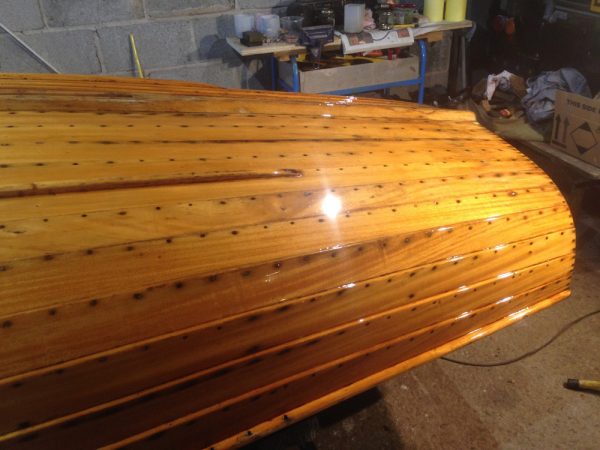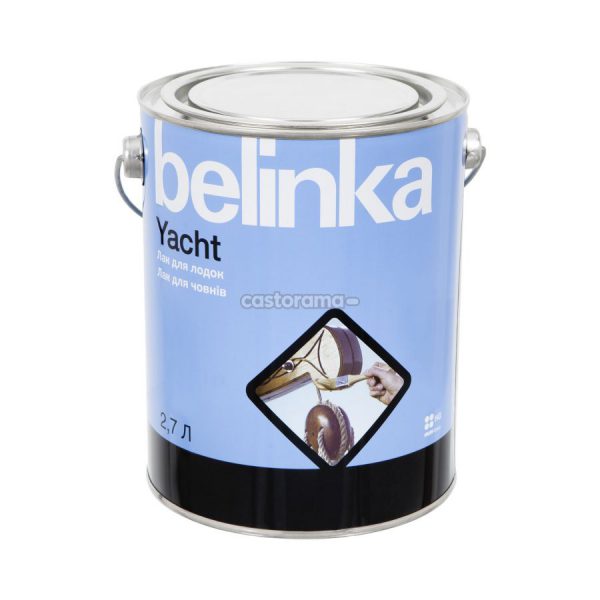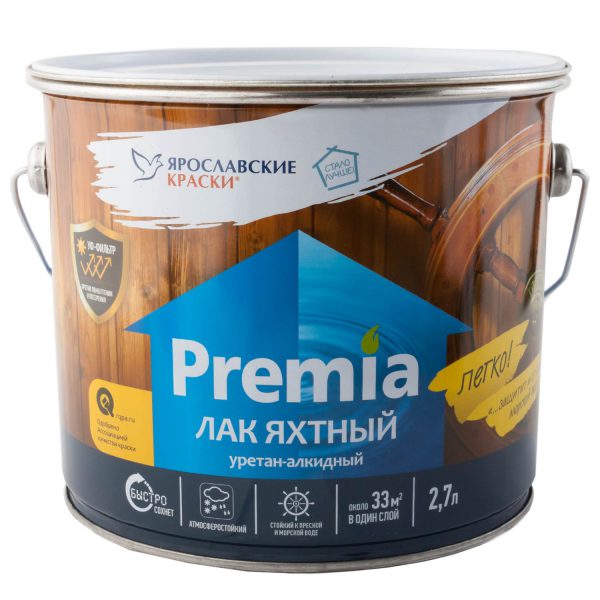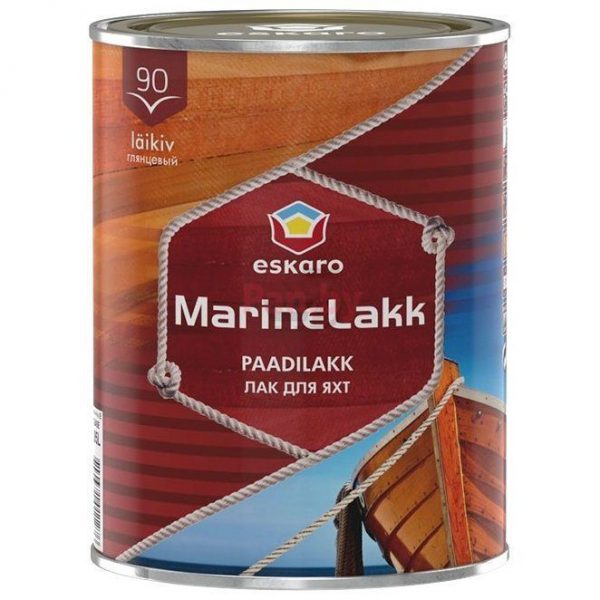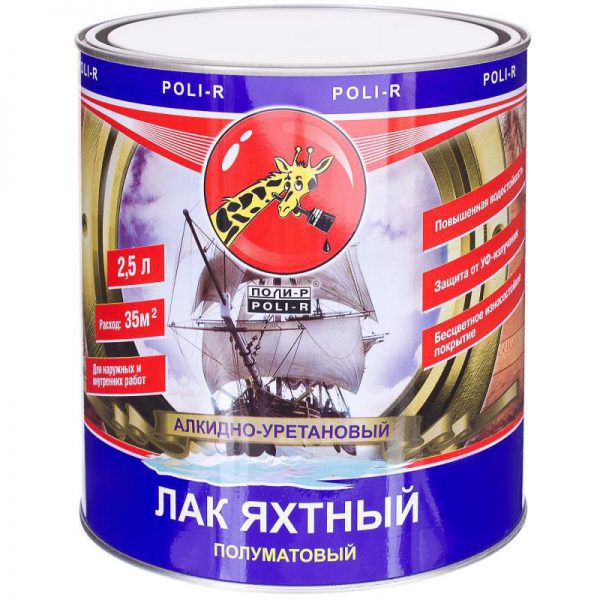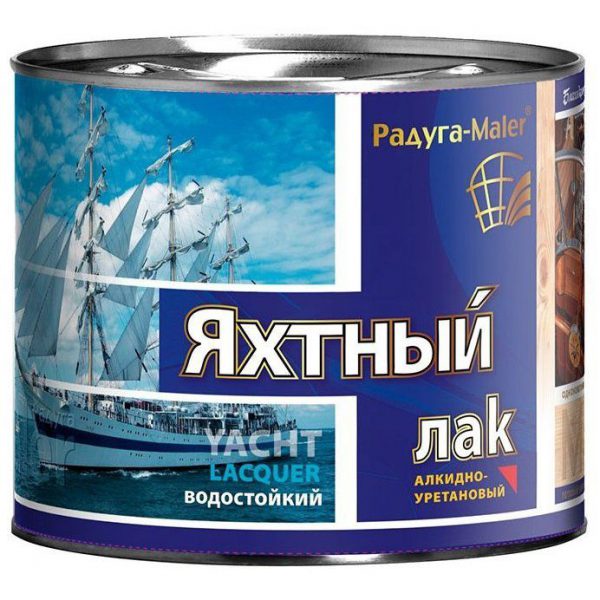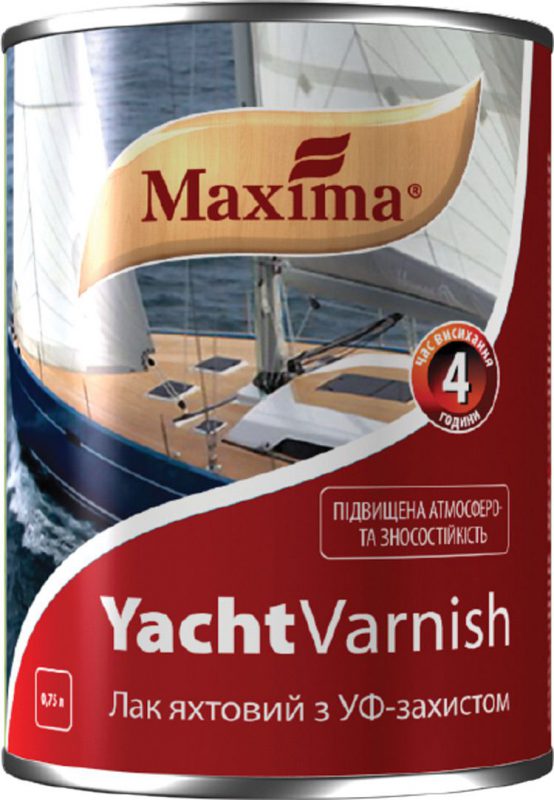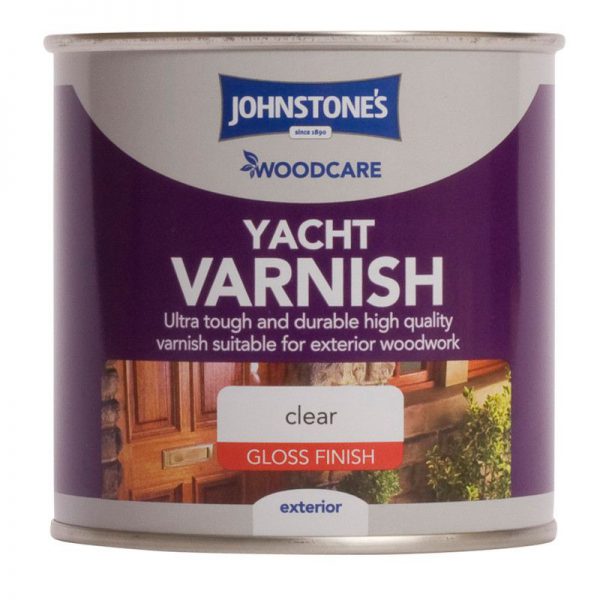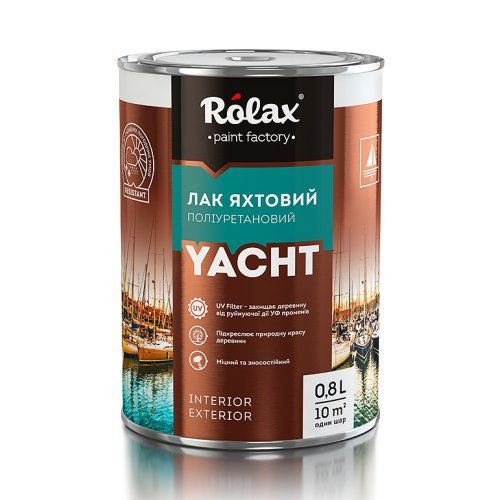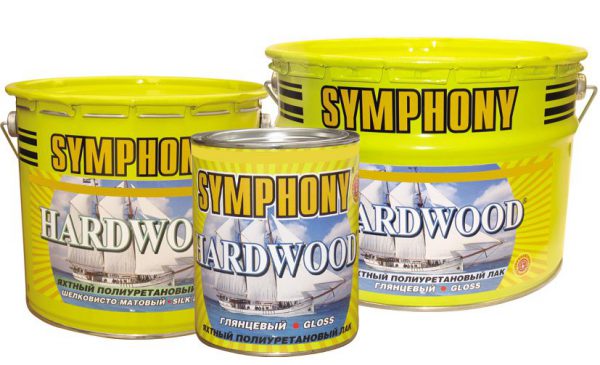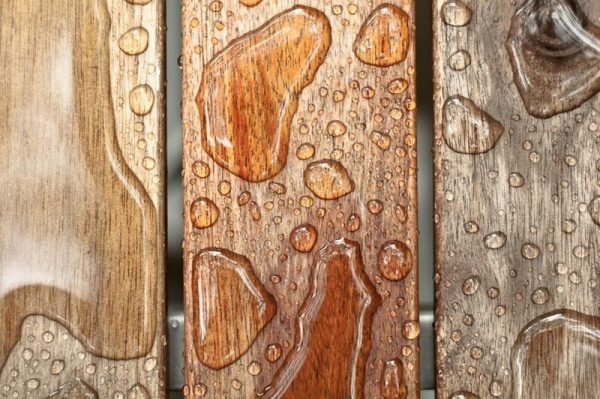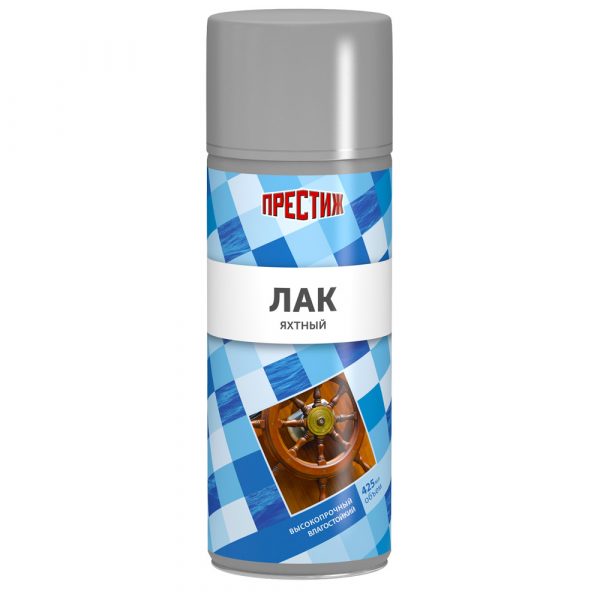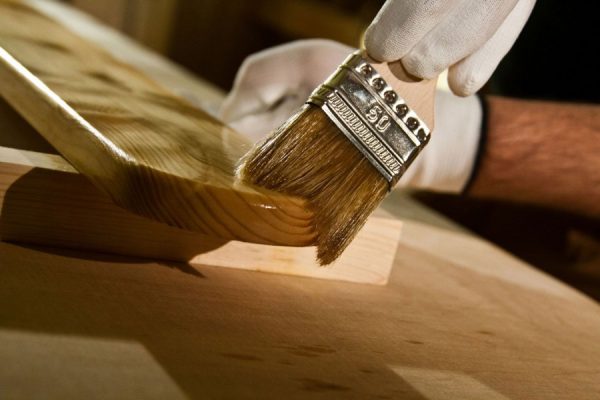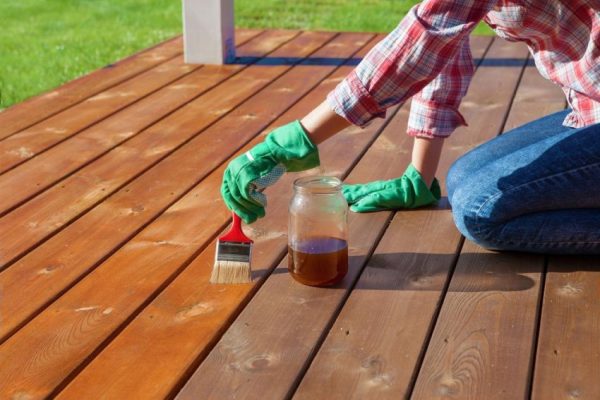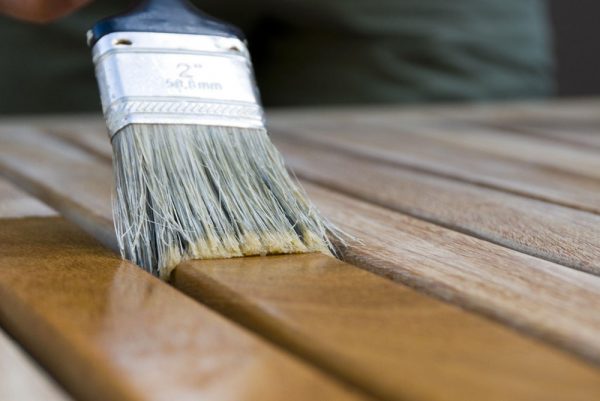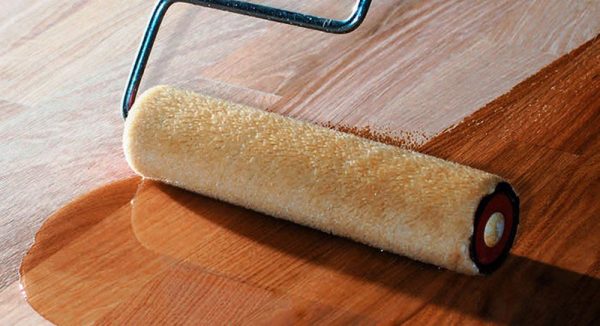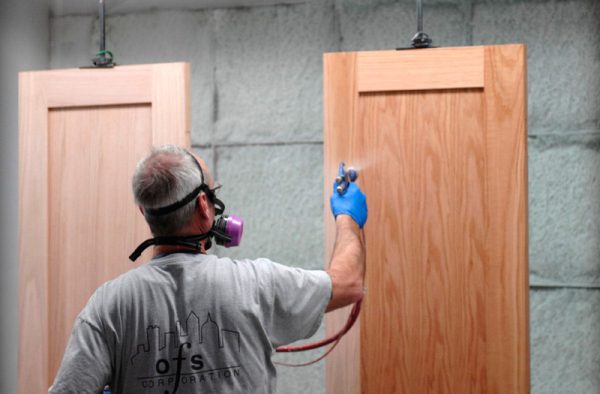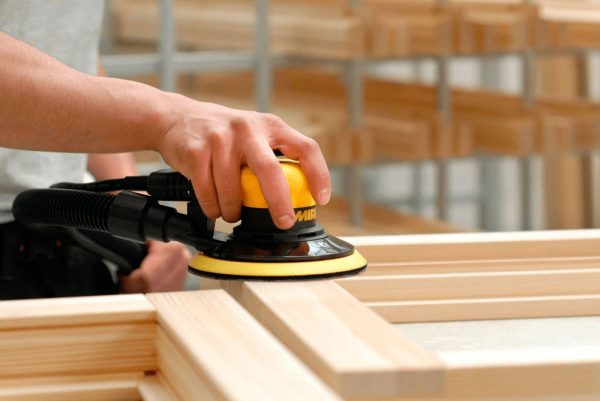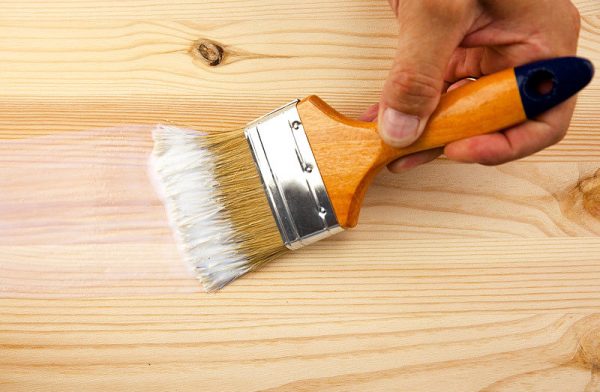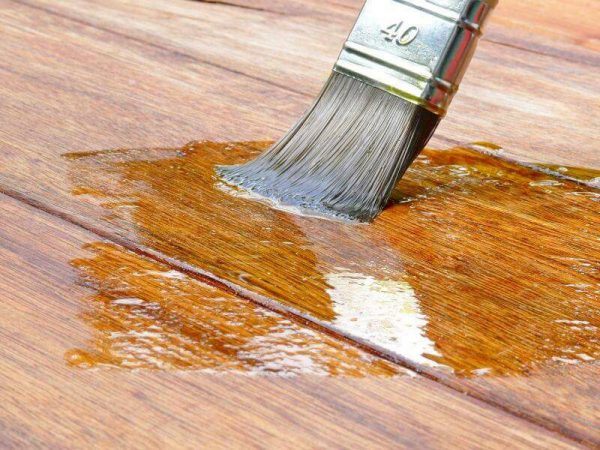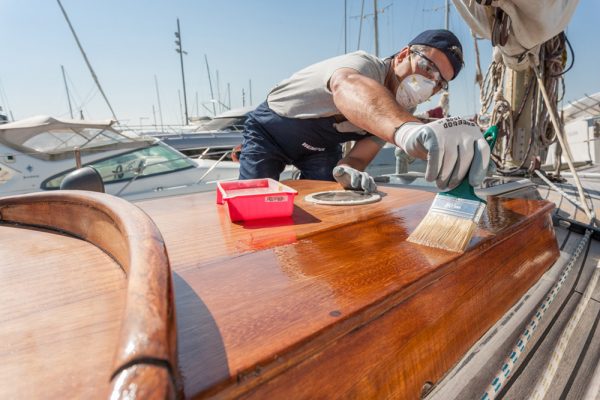Yacht varnish is a special kind of finish coatings. It is used for varnishing hulls and inner lining of yachts, wooden boats and ships. Such tools are characterized by extreme strength and flexibility, due to which one application is enough for 5-7 years of operation.
- Properties and chemical composition
- Areas of use
- Types and best brands
- Alkyd varnish
- Alpina yachtlack
- Belinka yacht
- Urethane Alkyd Varnish
- Premia
- Eskaro Marine Lakk 90
- Alkyd-urethane varnish
- Poli-r
- "Rainbow-Maler"
- Maxima Yacht Varnish
- Polyurethane varnish
- Johnstones Yacht Varnish
- Rolax
- Symphony hardwood
- Advantages and disadvantages
- Packing Methods
- Selection recommendations
- Application Instructions
- How to determine the flow rate of a solution
- Tool selection
- Brush
- Roller
- Airbrush
- Wood preparation
- Primer
- Varnishing
- Security measures
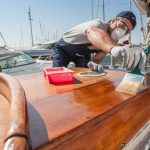
There is an opinion that the names “yacht varnish”, “ship varnish” are just a marketing ploy. Now the scope of yacht varnishes has seriously expanded, they are used both in production and for processing furniture, floors and other household products.
Properties and chemical composition
The main purpose of varnish is to protect wood from the negative effects of external factors. Therefore, special substances are introduced into its composition that ensure such properties at a sufficient level. To obtain high water resistance, the product contains xylene, toluene or other toxic benzene compounds. It is because of them that the varnish can not be used indoors, although as it evaporates, the coating becomes safe for the body. The main component of yacht varnish can be various polymers - alkyds (synthetic resins based on phthalic acid), urethanes, etc.
The concept of “yacht varnish” or “deck varnish” is applicable to all products that are characterized by high weather resistance and are intended for wooden products. Materials of this group are characterized by such properties:
- High adhesion to the base. The varnish film adheres securely to the surface, does not exfoliate, and does not crack over time.
- Strength and hardness. Thanks to these qualities, the varnish does not respond to scratches, is not damaged by other types of mechanical stress and lasts a long time.
- Elasticity. After drying, the material is able to move to some extent following changes in the position of the substrate. This property helps the varnish film not to crack, not to peel off even with strong shrinkage of wood.
- Abrasion resistance. Yacht varnish is resistant to abrasion, because it has good ductility and tensile strength.
- Moisture resistance. The film repels water, protects the wood from getting wet and swelling, and prevents putrefaction and mold.
- Counteraction to microorganisms. Thanks to the varnish coating, the underwater part of the vessels does not overgrow with algae, fungal colonies, other aquatic organisms do not settle on it. This helps to save fuel and extend the life of the wood. This property is achieved by introducing into the composition of biocides that are not washed out by water and do not dissolve in it.
- UV resistant. Varnish includes additives that absorb ultraviolet light and transform it into thermal energy.Also in the composition there are light stabilizers (amines) that bind free radicals and prevent the latter from destroying the varnish film.
Insecticides are often introduced into household products that are used to protect furniture and other household items. They prevent the appearance of flies, other insects and the reproduction of larvae in wood.
to contents ↑Areas of use
Yacht varnish is ideally suited for the treatment of boats, launches, and other wooden vessels, both outside and inside. In everyday life, it is also very popular and is used to protect wooden, wood-shaving materials, which are operated in difficult weather conditions. Shipborne varnish process such products:
- wooden furniture;
- garden structures;
- fences;
- facades of houses;
- bearing structures of attics, arbors;
- benches, figures made of wood;
- windows and doors;
- components of frame structures.
to contents ↑Despite the presence of harmful substances, yacht varnish is often used to protect wood flooring to give them scratch and abrasion resistance. Please note that during drying, living indoors is strictly contraindicated, all yacht varnishes are toxic!
Types and best brands
Depending on the degree of reflection of light, varnishes are divided into the following types:
- glossy - perfectly reflect the luminous flux, look beautiful, but require special care and careful preparation of the surface before application;
- semi-gloss and semi-gloss - reflect light worse, have a moderately pronounced luster;
- matte - practically do not shine, well mask pollution, visually hide defects and roughnesses of the base.
In addition, all varnishes are classified, depending on the main chemical substance that is part of them, into alkyd, urethane-alkyd, alkyd-urethane and polyurethane.
to contents ↑Alkyd varnish
This ship's varnish contains the most toxic compound - benzene, so it can be used exclusively for outdoor use. Benzene vapors are released even after solidification of the varnish film, affecting the human body for several months. Alkyd varnishes are used to cover wooden fences, roofs, the outer part of arbors. With moderate mechanical and physical stress, the coating lasts about five years.
to contents ↑Alpina yachtlack
This is a product of joint Russian-German production, characterized by high quality. It contains not only alkyds, but also polyurethane additives that enhance elasticity, resistance to weathering and aggressive factors. Varnish is used for processing underwater and surface parts of ships. The advantages of the composition are obvious:
- high shockproof, protective properties;
- resistance to point impact and scratching;
- beautiful gloss without yellowness.
The product dries for a long time (up to 3 days), while releasing a persistent unpleasant odor. If it gets on the skin, it can provoke its overdrying and the appearance of cracks.
to contents ↑Belinka yacht
Varnishes of this brand are presented in different variations according to the type of light reflection - matte, semi-matte, glossy, and the cost of matte products is an order of magnitude higher. It is convenient to apply the products thanks to the liquid texture; they are quickly absorbed into the tree without changing its color, without causing yellowing. Varnishes are characterized by mechanical resistance and excellent tolerance of fresh and salt water. The disadvantage is high consumption (100-180 g / sq. M) and the need to apply in 3-4 layers.
to contents ↑Urethane Alkyd Varnish
In the composition of such a varnish, the amount of alkyds is reduced due to the addition of plasticizing substances (urethanes). They are harmless to health, as they do not emit toxins. Due to the change in composition, urethane-alkyd varnishes are suitable for internal woodwork, of course, with strict observance of safety measures. The hardened film does not respond to aggressive climatic factors, precipitation, temperature changes, while maintaining protection for up to 10 years. Varnishes are not afraid of heating, therefore, after drying, they are suitable even for heated floor coverings.
to contents ↑Premia
The composition is made in Russia ("Yaroslavl paints"). It dries quickly, protects wood from ultraviolet radiation, and does not give stains after solidification. The material is resistant to salt water, has a low flow rate (75-100 ml / sq. M), and is suitable for manual and mechanized application. Available in glossy, semi-gloss, matte finish. The downside is the high price.
to contents ↑Eskaro Marine Lakk 90
Varnish is made in Estonia; it is similar to gel in consistency. It can be applied without removing old coatings. After drying, it gives a gloss that emphasizes the beauty of wood. Suitable for exterior and interior use, resistant to cracking, abrasion, although not suitable for flooring. The finished film can be washed using household chemicals. Cons - the need to apply three layers (otherwise the strength will be insufficient), an average degree of coverage, a high price.
to contents ↑Alkyd-urethane varnish
This type of varnish is considered the most popular for outdoor woodwork. In the composition of alkyd-urethane agents, only one part of the alkyds is replaced by urethanes, therefore they remain highly toxic. Nevertheless, the wear resistance of materials increases, as well as moisture resistance, resistance to the influence of alkalis. To optimize technical properties, antioxidants and desiccants are introduced into alkyd-urethane varnishes.
to contents ↑Poli-r
Due to the presence of a large number of UV filters, this varnish practically does not react to the action of solar radiation. The product has a unique property - it can smooth out irregularities in wood, so it will be easier to take care of the product. The advantages of varnish are as follows:
- low consumption, low price;
- lack of stickiness after drying;
- application without smudges, stains;
- dense texture, the ability to breed with a solvent;
- long service life (9 years).
Unfortunately, the varnish may turn yellow over time, and its smell disappears only after a few days.
to contents ↑"Rainbow-Maler"
The varnish is characterized by maximum moisture resistance, reliable adhesion to the substrate, resistance to temperature changes. It is quite thick, does not flow even on vertical bases, does not emit a pungent odor, which is very different from "brothers". The tool emphasizes the pattern of wood, dries quickly (per day), does not crack, does not fade. For full protection of the tree you need to apply 3-4 layers of varnish, in addition, its consumption is quite large.
to contents ↑Maxima Yacht Varnish
This tool, unlike standard yacht varnishes, has little water resistance, therefore it is used only for processing the surface of ships. Its most common use in hot climates is to protect domestic and industrial wooden structures. Due to its low odor, the varnish is suitable even for indoor use. Its advantages are as follows:
- applied in any way;
- has a matte look;
- easily diluted with solvent;
- contains powerful UV filters;
- has a minimum flow rate (about 60 ml / sq. m);
- dries to stick in 3 hours.
Polyurethane varnish
The basis of such varnishes are polyurethane resins, which are characterized by elasticity, strength, wear resistance. Due to their high adhesion, they adhere reliably even to smooth bases. Some products are polyurethane-acrylic: acrylate resins are added to them, and such varnishes can boast of a lack of smell and safety for humans.
Johnstones Yacht Varnish
The English composition for external use is suitable not only for wood, but also for stone, brick, and other facade materials. Like other yacht varnishes, it creates a durable elastic film that does not deteriorate from mechanical influences, temperature extremes, and UV radiation. The tool is especially durable in relation to abrasion, shock loads, dries in 2-4 hours. Cons - high cost, the presence of a large number of organic solvents, harmfulness.
to contents ↑Rolax
Ukrainian yacht varnish for wood and metal with the addition of antifungal components. It stops the processes of decay in a tree, extends its life, has a small flow rate of about 80 ml / sq. m It lays down without streaks, does not flow, gives almost a mirror shine. Cons - unpleasant odor, long drying.
to contents ↑Symphony hardwood
This tool differs from analogues in its very long drying time - up to 14 days. This feature is associated with the presence in the composition of special additives that provide unique moisture resistance. The coating does not deteriorate even from continuous exposure to water up to 7 days. Typically, the composition is used for domestic purposes. It can be applied directly to old coatings, tinted (if necessary), easily bred, and has high weather resistance. It is realized in glossy and silky-matt versions.
to contents ↑Advantages and disadvantages
The use of yacht varnishes has a lot of advantages, due to which the compositions are in demand in a variety of industries. Here are the main advantages of the funds:
- excellent compatibility with wood, reliable adhesion to any lumber and wood-based raw materials;
- fast impregnation of the base and a long stay in its structure;
- non-exposure to the influence of sunlight, lack of burnout and destruction;
- water repulsion; prevention of rotting and mold;
- high aesthetic appeal, well-groomed appearance of the product;
- prevention of chips, scratches, damage from chemicals - alkalis, salts, acids;
- relatively low cost of processing, profitability.
The disadvantages are associated with the presence of harmful substances in the composition. Organic solvents are toxic and adversely affect human health. As a result, the scope of special equipment remains limited.
to contents ↑If the wood was wet, the degree of protection against varnishing is sharply reduced, therefore ship varnishes are not suitable for fresh wood products. Many products do not tolerate the effects of frost, become fragile.
Packing Methods
Most often on sale there are varnishes in banks, for the application of which you need to buy brushes or rollers. They can have a large volume, which is convenient for varnishing overall surfaces. Also, manufacturers make aerosol products packaged in spray cans. They are comfortable to use, practical, although their price in terms of much higher.
to contents ↑Selection recommendations
Before purchasing varnish, you need to determine in advance its purpose. If the work is carried out in air, you can choose an alkyd or alkyd-urethane composition. For internal work, it is recommended to buy urethane-alkyd varnish. The type of surface to be treated also affects the choice of composition. So, polyurethane-acrylic products are suitable for home furniture made of natural wood, alkyd and their derivatives - for garden benches, arbors, swings.
The wood floor is best treated with high-quality urethane-alkyd ship varnish, while carefully ventilating the room. Glossy coatings look more festive and attractive, matte - stylish and elegant. If varnish with maximum moisture resistance is required, it is worth paying attention to the brands Belinka, Alpina, Eskaro.
to contents ↑Application Instructions
Work indoors or outdoors can only be carried out at positive temperatures, with a range of + 15 ... + 30 degrees being considered optimal. Humidity during application should not exceed 80%.
How to determine the flow rate of a solution
Usually the exact consumption of the substance is indicated by the manufacturer on the packaging. The standard flow rate is 60-130 ml / sq. m. This indicator may vary depending on such factors:
- grinding quality - the higher it is, the less composition is used up;
- type of material - porous rocks (walnut, ash) require more funds;
- viscosity - liquid varnish needs less than thick;
- application tools - the spray gun will spend less varnish than hand tools.
Tool selection
For applying special equipment, tools are required, and only compositions in spray cans are applied by conventional spraying.
Brush
This is a simple and affordable tool for painting. It can have synthetic or natural bristles of different lengths. If the bristles are natural, you will often have to squeeze the brush when working, because it has the property of accumulating fluid. Artificial materials give a smoother and more even coating, are resistant to wear and are better suited for outdoor use.
to contents ↑Roller
For large areas, rollers are ideal. Need to purchase tools with a short pile, which do not cause sagging and are not deformed. To make the film more uniform and dense, it is worth buying small rollers. For the processing of facades using large products.
to contents ↑Airbrush
This convenient device is great for varnishing surfaces, especially in hard to reach places. The composition is applied by spraying, so that the coating is beautiful, uniform, high quality.
to contents ↑Wood preparation
Lacquering should begin with the preparation of wood. If its humidity is above 20%, the material must be dried with a construction hair dryer or in special chambers. Next, they clean the product from dirt, dust, any stains and grease. Grind the base with sandpaper or a grinding machine. Eliminate areas of mold, mildew, treat them with an antiseptic.
to contents ↑Primer
To reduce the porosity of wood, it is primed with a special pore-filling soil. Among other things, it will improve the adhesion of the special composition to the substrate and reduce its consumption. After priming, a small area of the product is varnished: if the tree continues to strongly absorb the varnish, apply another layer of soil.
to contents ↑Varnishing
After opening the cans, the composition is mixed with a wooden spatula, which will exclude delamination. If the mass is too thick, add solvent - solvent, white spirit, turpentine. Each layer should dry for 2-6 hours (the exact time is indicated in the instructions), after which it is sanded with sandpaper and a new layer is applied. Then the film is allowed to dry completely.
to contents ↑Security measures
It is impossible to work with varnishes without personal protective equipment! Only with street processing of wood with low toxic substances can one work without a respirator and glasses. To reduce the risk of the composition getting onto the skin, it is better to use protective devices, including gloves, overalls. Subject to the technology, the varnish coating will look spectacular and will last for many years!

